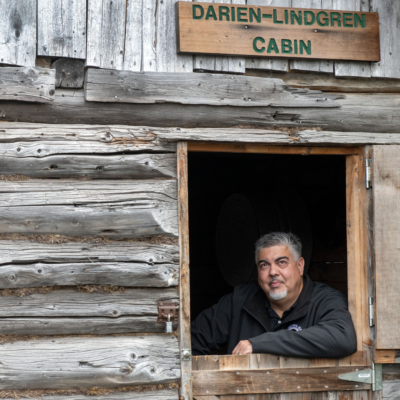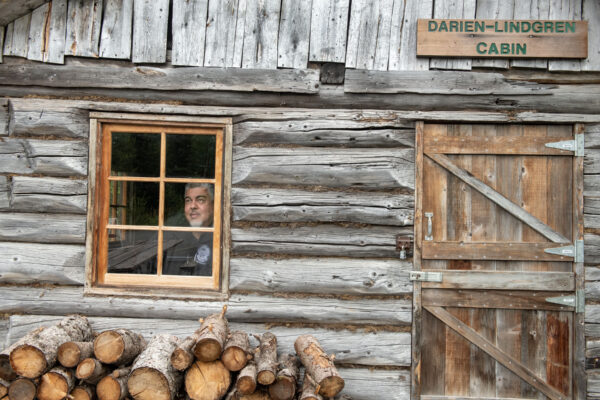In 2005, as the new Cultural Program Coordinator for the Kenaitze Indian Tribe, my first big task was coordinating the Susten Youth Archaeology Camp. Our objective was to excavate around the historic Darien-Lindgren cabin before it was moved to the K’beq’ Cultural Heritage Interpretive Site.
Eli Darien and his nephew, Herman Lindgren, both tribal members, built the cabin in 1937. It was typical at that time for young Dena’ina men to work with their uncles to learn how to live off the land. Over the years, the cabin was used for hunting, fishing and trapping. It was also a place to go for healing and recovery from substance abuse.
 By 2005, the semi-remote cabin was used occasionally by family. Because of its location on the Kenai River, it was accessible to the public. The cabin was deteriorating and being vandalized. Kenai National Wildlife Refuge and Kenaitze Indian Tribe administrators decided to move the cabin to a safer location.
By 2005, the semi-remote cabin was used occasionally by family. Because of its location on the Kenai River, it was accessible to the public. The cabin was deteriorating and being vandalized. Kenai National Wildlife Refuge and Kenaitze Indian Tribe administrators decided to move the cabin to a safer location.
We set up our Susten basecamp during a sudden downpour, and noticed smoke rising across Skilak Lake. This would become the King County Creek Wildfire.
The next morning we set out for the cabin. We ferried our gear by boat while campers hiked in along a three-mile trail.
Back at camp that evening, we watched the wildfire on the far shore grow. It flared up often as it burned through beetle-killed spruce.
When we returned to the cabin the next day, I had three voicemails from Refuge Cabin Manager Gary Titus. Gary’s voice became more intense with each message, cautioning that the wildfire was getting closer. We decided to get everyone back to camp. Gary agreed, adding that aerial tankers were going to drop water on the fire in that area soon.
The campers were hot and tired from their hike in, but I told them they needed to head back down the trail. Fifteen minutes later, as I was loading gear into the boat, the first water tanker flew over just above the treetops.
That night, Gary and his crew disassembled the cabin and transported the logs upstream by boat. With each return trip, he transported firefighting crews down to the site.
Gary’s crew disassembled the cabin, marked the logs for reassembly, and transported them to the campground, all in 24 hours.
The next morning, we met at K’beq’ to reassemble the cabin. Sasha Lindgren and her aunt Francis Lindgren (Herman Lindgren’s niece and wife) were there to help.
The fire never made it to the cabin site, and we were able to return to complete our excavation work.
Of note, we found many glass bottles – but none were alcohol. They were all Coke bottles, corroborating stories of the cabin as a place for healing and recovery.

By Michael Bernard, Cultural Resource Supervisor, Kenaitze Indian Tribe
